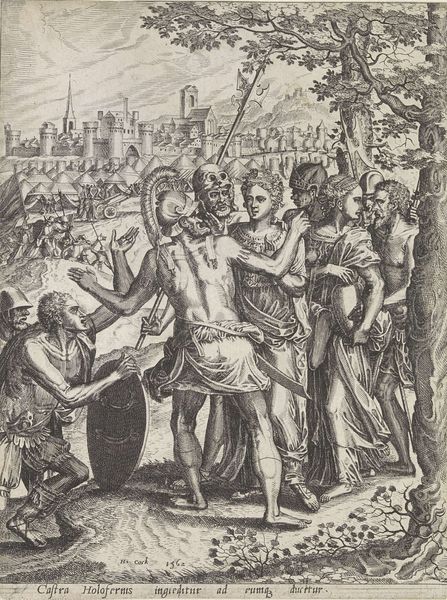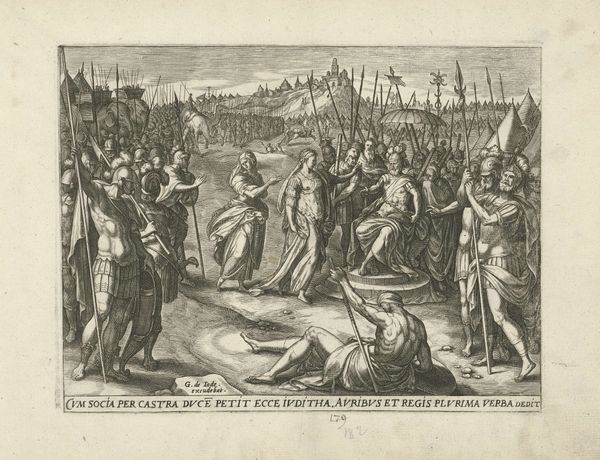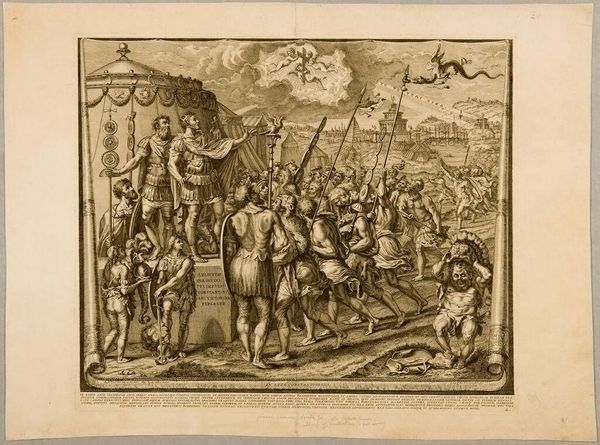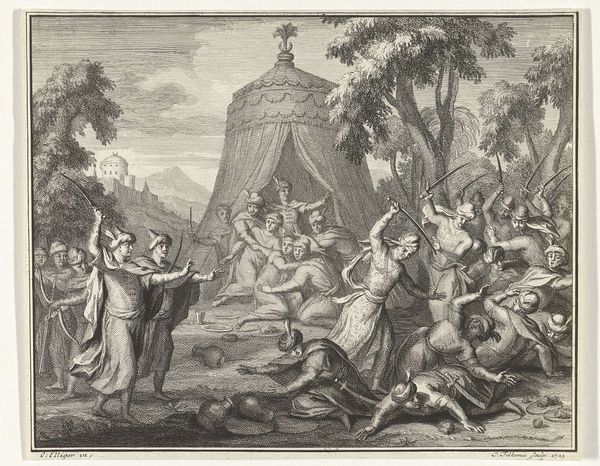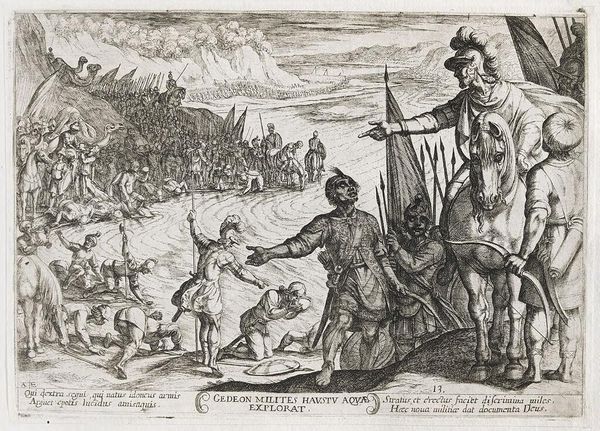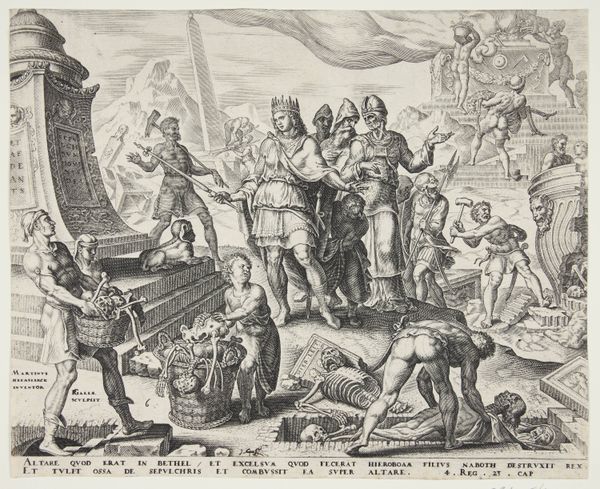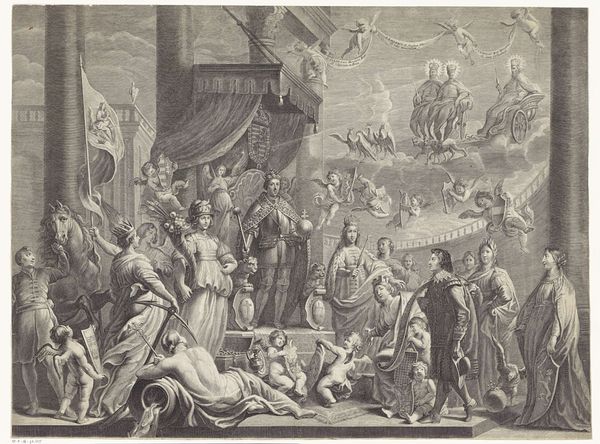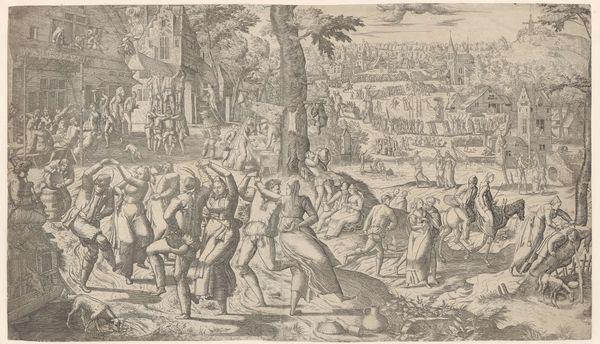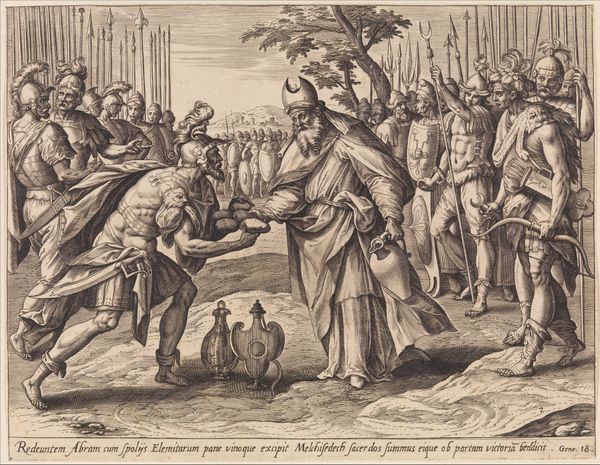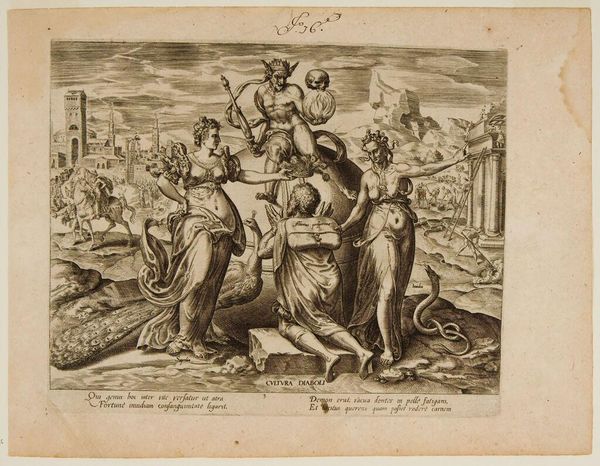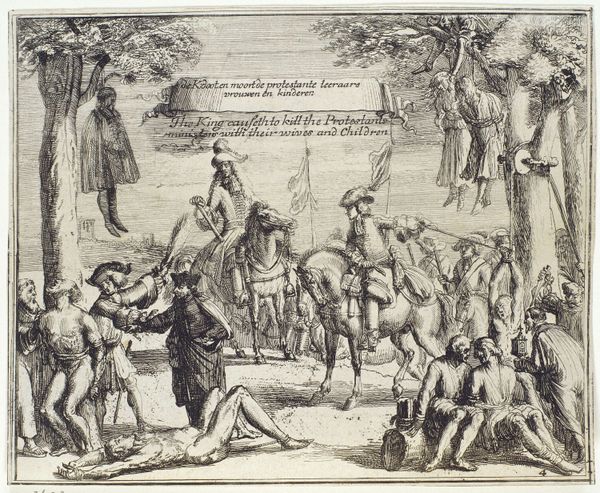
Vrouwen en kinderen zien toe hoe Civilis slag levert met de Romeinen, 69-70 1684
0:00
0:00
josephmulder
Rijksmuseum
print, engraving
#
narrative-art
#
baroque
#
pen drawing
# print
#
landscape
#
figuration
#
pen-ink sketch
#
history-painting
#
engraving
Dimensions: height 216 mm, width 323 mm
Copyright: Rijks Museum: Open Domain
Editor: So, this engraving, "Vrouwen en kinderen zien toe hoe Civilis slag levert met de Romeinen, 69-70," was made in 1684 by Joseph Mulder. It depicts women and children watching a battle. It's fascinating how detailed and precise it is, considering the medium. What do you see in it? Curator: Well, for me, it immediately sparks questions about the labor involved in its production. Think about the engraver meticulously carving into a metal plate, transferring not just the image but also the power dynamics of the time. We see war depicted, but the *means* of depicting it—engraving—was also a technology, a form of power and commerce. Who commissioned this print and for what purpose? Editor: That’s a very different way to look at it! I was focusing on the historical narrative. Curator: The historical narrative is, of course, present. But look at how the scene is constructed. The printing process itself, involving metal, ink, and paper, connects directly to trade and distribution. Were these images meant to be circulated widely, creating a sense of shared cultural identity? It raises the issue of cultural commodities. Editor: So you are looking at it more as a manufactured object relating to economics and society. Curator: Exactly! Consider the paper it is printed on, where it originated, and how the very materials impacted artistic and viewing experiences of the work itself and as part of a network. Editor: I never thought about it like that. It's more than just the story; it's about the whole production and reception. I will remember to look more into this socio-economic-production approach! Curator: Indeed. By focusing on the materiality, production process, we uncover so much more than just the immediate subject matter.
Comments
No comments
Be the first to comment and join the conversation on the ultimate creative platform.



